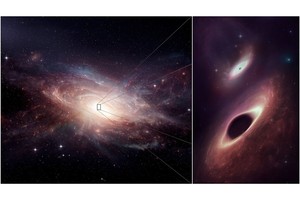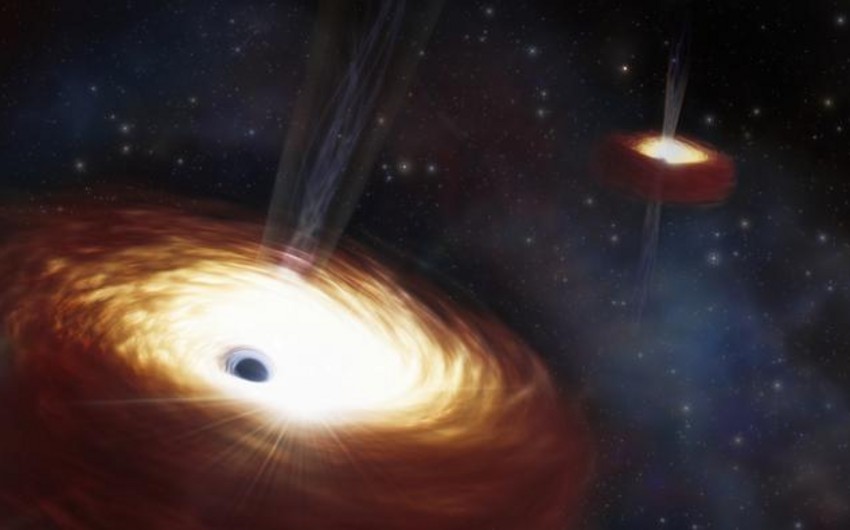The US astronomers from Stanford University have studied the heaviest pair of black holes ever found. The object is located in the elliptical galaxy B2 0402+379, Report informs referring to The Astrophysical Journal (TAJ).
Nearly every massive galaxy hosts a supermassive black hole at its center. When two galaxies merge, their black holes can form a binary pair, meaning they are in a bound orbit with one another. It’s hypothesized that these binaries are fated to eventually merge, but this has never been observed. The question of whether such an event is possible has been a topic of discussion amongst astronomers for decades, EurekAlert reports.
The team used data from the Gemini North telescope in Hawai‘i, one half of the International Gemini Observatory operated by NSF’s NOIRLab, which is funded by the US National Science Foundation, to analyze a supermassive black hole binary located within the elliptical galaxy B2 0402+379.
The team estimates the binary’s mass to be a whopping 28 billion times that of the Sun, qualifying the pair as the heaviest binary black hole ever measured. Not only does this measurement give valuable context to the formation of the binary system and the history of its host galaxy, but it supports the long-standing theory that the mass of a supermassive binary black hole plays a key role in stalling a potential merger.
With new knowledge of the system’s extremely large mass, the team concluded that an exceptionally large number of stars would have been needed to slow the binary’s orbit enough to bring them this close. In the process, the black holes seem to have flung out nearly all the matter in their vicinity, leaving the core of the galaxy starved of stars and gas. With no more material available to further slow the pair’s orbit, their merger has stalled in its final stages.
Whether the pair will overcome their stagnation and eventually merge on timescales of millions of years, or continue in orbital limbo forever, is yet to be determined. If they do merge, the resulting gravitational waves would be a hundred million times more powerful than those produced by stellar-mass black hole mergers. It’s possible the pair could conquer that final distance via another galaxy merger, which would inject the system with additional material, or potentially a third black hole, to slow the pair’s orbit enough to merge. However, given B2 0402+379’s status as a fossil cluster, another galactic merger is unlikely.



 https://static.report.az/photo/12faf591-3b46-338b-ab46-49f622c19bfc.jpg
https://static.report.az/photo/12faf591-3b46-338b-ab46-49f622c19bfc.jpg

